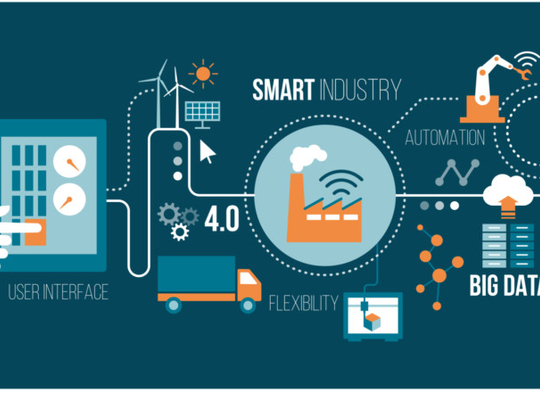
Construction, it seems, is an industry stuck in a time warp. While other industries — from retail to manufacturing — have transformed their efficiency, boosted productivity and embraced the digital age, construction has struggled to evolve its approaches. As a result, productivity has suffered in a sector where $10 trillion (Dh36.73 trillion) a year is spent on buildings, infrastructure and industrial installations.
In fact, if the industry can lift construction productivity to the same level as that of the total economy, it could generate an additional $1.6 trillion.
These observations are from a February 2017 analysis by McKinsey Global Institute (MGI). The report, Reinventing Construction: A Route to Higher Productivity, observes, “Significant advances that are either being deployed or prototyped today can transform the effectiveness and efficiency of construction in three main areas: digital technologies, advanced materials and construction automation.”
McKinsey points out that companies can put themselves at the cutting edge by using platforms such as 5D BIM to establish transparency in design, costing and progress visualisation. Besides, they can use digital collaboration tools, deploy drones for scanning and mapping, or exploit advanced analytics enabled by the Internet of Things (IoT) to improve on-site performance. And yes, they can leverage smartphone apps or mobility tools to track progress and collaborate in real time.
Underinvestment in IT
The report adds, “MGI’s productivity survey indicated that the biggest barriers to innovation by construction companies are underinvestment in IT and technology more broadly, and a lack of research and development processes. Establishing innovation officers can make a difference for technology adoption.”
Nonetheless, the roster of organisations making the most of technology is rapidly growing, especially in the UAE. “Honestly, the UAE government is championing in the space of technologically advanced architecture,” says Paul Murphy, director of interior design at Draw Link Group. “We can see some spectacular construction across the city — DIFC and D3 for example.”
Murphy also points to 3D printing — “a tangled web of technologies, materials, new processes and capabilities” — that has already begun transforming the real estate sector with the ability to produce individual tailored pieces at a fraction of the cost, while reducing risks and making alterations easy.
“With the capacity to personalise and bring to life virtual objects, the demand for 3D-printed artwork will only continue to grow. This technology has put the design back into a designer’s hand,” insists Murphy, adding that even if whole buildings aren’t 3D-printed, it’s likely that pieces of future buildings will be.
Some companies such as ZAS Group are now using new techniques and technologies such drone photography in conceptualising projects and conducting feasibility studies. “We also use 3D printing to print physical models in some of our projects. It’s faster and a more economical option,” says DJ Armin, managing partner of ZAS Group. Similarly, deploying Revit software for BIM has delivered improved design quality and savings in time and money for the firm and its customers.
Armin is also excited about the potential of virtual reality (VR) and augmented reality (AR) to “facilitate the real estate industry like never before”. During the pre-construction phase, 360-degree renderings can help visualise unfinished projects.
“You can also design or create hotspots to allow for interaction with customers. They can modify and make custom changes to design as they wish and see the results immediately,” says Armin, adding that in the post-construction phase, VR and AR can omit geographic and time constraints — clients do not have to travel long distance to see a place. They can even visit several places in a short time.
Homebuyer’s app
An impressive example is the Really! home purchasing app, a prototype developed in cooperation with Emirates NBD and the SAP Co-Innovation Lab in the UAE. Targeted at homebuyers across the globe looking at investing in the UAE, the app combines beacons, SAP in-house virtual, augmented and mixed reality solutions, Dubai Municipality’s geographic addressing system Makani and customer loan information from Emirates NBD.
As Hichem Maya, head of industries at SAP Middle East and North Africa, explains, “Buyers can narrow options by cost, proximity to schools, shops, restaurants and hospitals, commute time and demographics, and take virtual tours of homes and floor plans, while sitting in the comfort of their homes.” App users can also check Dubai housing trends to calculate the down payment, loan type and amount, and connect with a loan agent.
Maya believes cloud solutions are making a major impact in the Middle East real estate sector, as companies look to have real-time business visibility. “Using Big Data analytics, real estate firms can have a dashboard with historical and predictive trends across customer purchasing decisions, neighbourhood property trends, and building performance, which combined lead to better decision-making, productivity and revenue,” he says, noting that with the Expo 2020 Dubai boosting real estate interest, UAE real estate companies need to run in real-time on the cloud so they can improve building performance with transparency and alignment, gain key insights into crucial building performance data and comply with the latest government leasing standards.
Looking ahead, Maya predicts that the real estate sector will be further impacted by artificial intelligence, blockchain, machine learning and IoT. “Taken together, these technologies can lead to automated, more secure and predictive customer trends, freeing up staff to focus on core business,” says Maya.
Armin notes that IoT has already made inroads, with many buildings having some level of intelligence built in — from security, fire safety to lighting and HVAC systems.
“Different sensors can track and monitor movement, air flow, light, water pressure, temperature, while Building Management Systems can analyse, act or react to other machines and users,” says Armin. “This allows better management of operations, security and energy. It also facilitates occupant comfort.”











